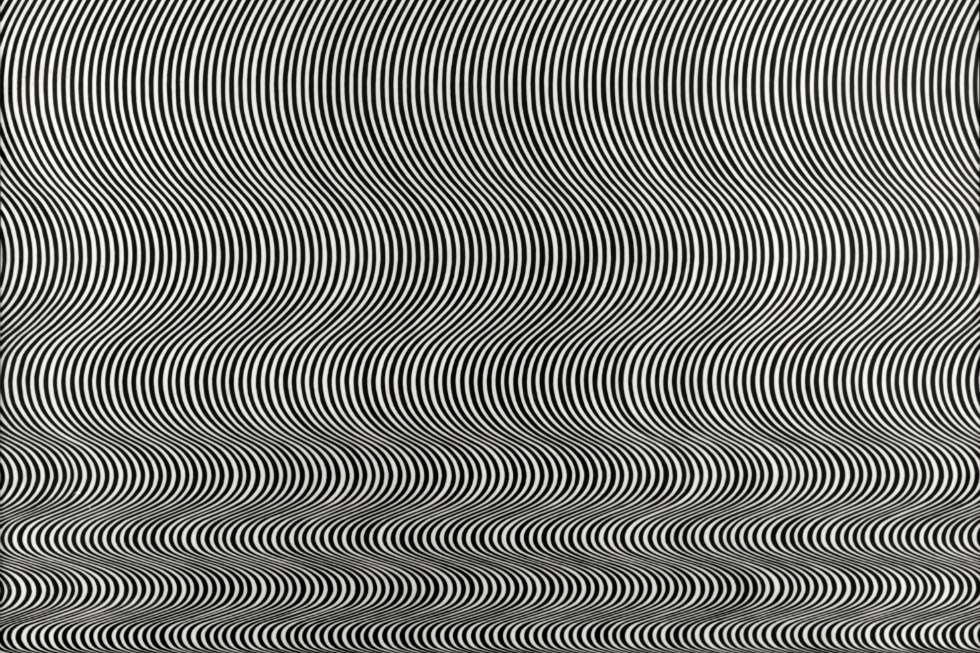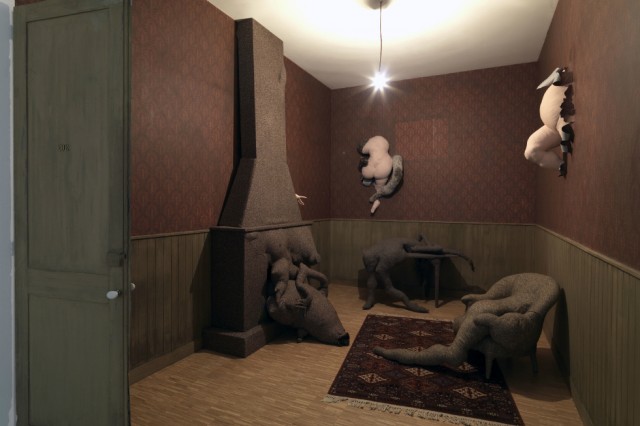“Art actually is under threat”: What Would You Save In An Imagined Museum?

Budget cuts, political and religious censorship and terrorism; art and culture are under threat. In their latest exhibition, Centre Pompidou-Metz, MMK and Tate Liverpool are asking us which artworks we would seek to save…
“What if art disappeared from our lives? If it was under threat, what are we going to do? What would we save? And what can art do for our lives and society that other things can’t do?”
I’m speaking to Peter Gorschlüter: deputy director at Frankfurt’s museum of contemporary art, MMK, about a brand new collaborative exhibition with Centre Pompidou-Metz and Tate Liverpool. It’s called Works to Know by Heart: An Imagined Museum and invites us to the year 2052: museums are under threat of closure, opportunities for artists to exhibit their work are greatly reduced, as is the public’s right to see it. If we had to imagine a way to preserve a shared heritage for future generations, how would we do it?
As curatorial concepts go, it’s not such a leap of imagination. In fact, it’s incredibly topical; Gorschlüter and I discuss Syria and Iraq and the very recent destruction of priceless, ancient artefacts. “Art actually is under threat”, Gorschlüter reflects. “The threat is not so fictitious. A lunatic, fictitious content [like this] has some grounding in our times.”
I also discuss this with Alexandra Müller, exhibition researcher, and Hélène Guenin, head of programming at Centre Pompidou-Metz. Our conversation eerily precedes the Paris Attacks. “Cultural questions are crucial today and are haunting Europe in the way that culture is a kind of cement of society — a place where a community recognize itself or start debating — and this symbolic shared territory is more and more vulnerable.
“Over the last decade culture and art were threatened in many different ways. Speaking about those subject we necessarily connect this to the tragic episode of the third Reich and of exhibitions like Entartete Kunst [Degenerate Art], but much closer to us we can multiply the examples of expressions of hate or violence against art and what culture in general represent.”

Müller and Guenin reel off multiple examples of contemporary threats to art: budget cuts, political and religious censorship, political indifference; the physical attacks on McCarthy’s ‘butt plug’ sculpture on Place Vendôme in 2014; the racist inscriptions on Anish Kapoor’s ‘Queen’s Vagina’ sculpture in Versailles.
“At the gates of Europe”, they maintain, “and in the continuity of the Taliban’s positions, Daesh and its troops (Islamic State) physically and symbolically dismantle the history and common representations of whole countries and people. It is important to remind that culture, freedom of expression and education are fragile and precious.”
In An Imagined Museum, these threats are seen through the prism of fiction and science-fiction; Gorschlüter explains.
“We had this idea of an imaginary museum; we are joining up our collections and pretending to make a museum that doesn’t really exist. That led us to look to fiction, books and literature; Ray Bradbury’s idea that something might disappear in the future.” This, of course, refers specifically to Bradbury’s dystopian novel Fahrenheit 451; published in 1953, it recounts a future American society where books are outlawed and ‘firemen’ burn any that are found. Fahrenheit 451 still packs a moral punch, asking: What creative works would you personally choose to salvage?
An intriguing twist at the end of the Imagined Museum exhibition references both Bradbury and a shocking photograph displayed in the show: Paul Almásy’s shot of the Louvre, Paris in 1942 (pictured). In it, all the gallery’s treasures have been hidden from view, and possible destcruction, during WWII, with just a chalked description remaining within empty frames.

“In Bradbury’s novel”, Gorschlüter says, “people start to remember/recount the books. This is really interesting in context of learning and of interpretation at our museums. So what are we going to save, and how? We want to encourage the audience to learn the works by heart.”
In a haunting echo of the Louvre’s war-torn empty galleries, An Imagined Museum’s finale weekend will see all the artwork physically removed. Recast as 2053: A Living Museum, the show will include dance performances orchestrated by acclaimed artist-choreographers Alexandra Pirici and Manuel Pelmuş — last seen ‘enacting’ the history of the Venice Biennale — alongside contemporary classical ensemble Epiphany, plus invited curators, art historians, artists, students, community groups and members of the public. All will attempt to remember their favourite artworks.
It has the potential, as assistant curator at Tate Liverpool Lauren Barnes tells me, to be the most exciting part of the exhibition. “How are people going to take them on, communicate them? How will they create a strong visual image of the work that has disappeared?”
But out of all An Imagined Museum’s 70 artworks — by Andy Warhol, Barbara Kruger, Bridget Riley (pictured) and more — how on earth would you choose just one to save and know by heart? All four — Gorschlüter, Barnes, Müller and Guenin — agree on one favourite.
“It would be a very intimate, dreamlike artwork,” Müller and Guenin reveal, “created by an artist with a richly furnished personal world: Dorothea Tanning’s Chambre 202, Hôtel du Pavot. This room brings into three-dimensional reality an untranslatable, mysterious vision inspired by a popular song from her childhood, haunting her mind:
“In room two hundred and two / The walls keep talkin’ to you / I’ll never tell you what they said / So turn out the light and come to bed.
“Here, woven fabric gives a physical morphology to an emotional reality, to everlasting fears and desires. The ordinary life is bursting, giving birth to a parallel world — terrible but life-enhancing. The invisible becomes visible, the familiar becomes strange.”
Laura Robertson
See Works to Know by Heart: An Imagined Museum – Works from the Pompidou, Tate and MMK collections — at Tate Liverpool (UK) from Friday 20 November 2015-14 February 2016
And at MMK, Frankfurt (Germany), 2 24 March-11 September 2016
And at Centre Pompidou-Metz (France) from 21 October 2016-27 March 2017
See An Imagined Museum’s finale weekend of performances and remembered artworks, 2053: A Living Museum, at Tate Liverpool from 20 and 21 February 2016, 10am-5pm each day — FREE
Would you like to perform at Tate Liverpool during the finale weekend? Join their ‘living museum’ and register your interest via email alivingmuseum@tate.org.uk, or sign up in the gallery. Selected applicants will then work closely with Tate Liverpool curators and artists at workshops to discuss and learn an artwork by heart so it can be re-enacted publically during the event





